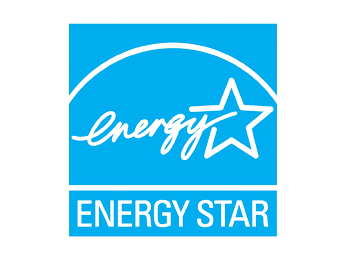
Energy Star
Energy Star is an energy saving plan led by the US government and mainly aimed at consumer electronics. The Energy Star Program was launched by the United States Environmental Protection Agency (EPA) and the United States Department of Energy (DOE) in 1992 to reduce energy consumption and greenhouse gas emissions. The plan was later adopted by Australia, Canada, Japan, Taiwan, China, New Zealand and the European Union. The plan is voluntary, and the Energy Star standard usually saves 20-30% energy than the US federal standard. The first products to cooperate with this plan are mainly information appliances such as computers, and then gradually extend to electric motors, office equipment, lighting, household appliances, etc. Later, it also extended to buildings. Since 1996, the United States Environmental Protection Agency has actively promoted the Energy Star Building Project. The Environmental Protection Agency assisted voluntary participants in assessing the energy use of their buildings (including lighting, air conditioning, office equipment, etc.), planning the action plan for improving the energy efficiency of the building, and follow-up tracking operations. Therefore, the sign of Energy Star can also be found in some homes or industrial and commercial buildings that introduced the new concept of environmental protection.
Test content
Test contents of Energy Star: safety, EMI, surge, noise (non Energy Star energy efficiency test items)
Optical performance and energy efficiency test items:
- Light efficiency and luminous flux
- Color temperature, color deviation, color rendering index
- Light intensity distribution, regional luminous flux distribution
- Chromaticity space nonuniformity
- Switching cycle
- Luminous flux maintenance rate
- Chromaticity maintenance rate
- Dimensions
- Electrical parameters
Scope of certified products
As of November 2008, “Energy Star” has covered more than 50 categories of products, mainly focusing on:
Computer and office equipment: such as display, printer, fax machine, copier, all-in-one machine, etc;
Household appliances and similar household products: such as refrigerators, air conditioners, washing machines, televisions, video recorders, etc;
Heating and cooling equipment: heat pump, boiler, central air conditioning, etc;
Large commercial buildings and newly built houses, doors and windows, etc;
Industrial and commercial products, such as transformers, power supplies, etc;
Lighting: such as household lamps;
Commercial food equipment: such as commercial ice cream machine, commercial dishwasher, etc;
Other commercial products: vending machines, channel signs, etc.
At present, the products targeted are: fluorescent lamps, decorative light strings, LED lamps, power adapters, switching power supplies, ceiling fan lights, consumer audio-visual products, battery charging equipment, printers, household appliances and other various products.
Development status
There are seven countries and regions in the world participating in the Energy Star Program promoted by the U.S. Environmental Protection Agency, namely, the United States, Canada, Japan, Taiwan, China, Australia, New Zealand, and the European Union, and the International Energy Star Program Conference has been held annually since 2001. At present, more than 30 categories of products have been included in the scope of this certification, such as household appliances, heating/cooling equipment, electronic products, lighting products, and so on. At present, lighting products are the most popular in the Chinese market, including energy saving lamps (CFL), lamps (RLF), traffic lights and exit indicators.
On April 14, 2010, the United States Environmental Protection Agency (EPA) and the United States Department of Energy (DOE) jointly announced the adjustment of the certification process of “Energy Star” products to ensure that only products that meet the requirements can be approved to obtain the “Energy Star” label. In this adjustment, the immediately effective clause is that if the manufacturer wants to obtain the certification label of “Energy Star”, it must submit a complete test report and evaluation results, and the EPA shall certify that the manufacturer will not be able to obtain the certification label of “Energy Star” until the product is approved by the EPA as a qualified product of “Energy Star”. At the same time, in the process of “Energy Star” qualification review, EPA has strengthened the approval system, no longer relying on automatic approval procedures, but checks and approves all new qualification applications.
EPA and DOE will further strengthen the certification process of “Energy Star” before the end of 2010, stipulating that all manufacturers must submit test results issued by recognized and approved laboratories to ensure that products meet the requirements of “Energy Star”. At present, the products involved include windows, doors, skylights and fluorescent bulbs. In the new testing process, the product categories under the “Energy Star” plan will expand to more than 60, including freezers, refrigerated freezers, washing machines, dishwashers, water heaters and room air conditioners.
